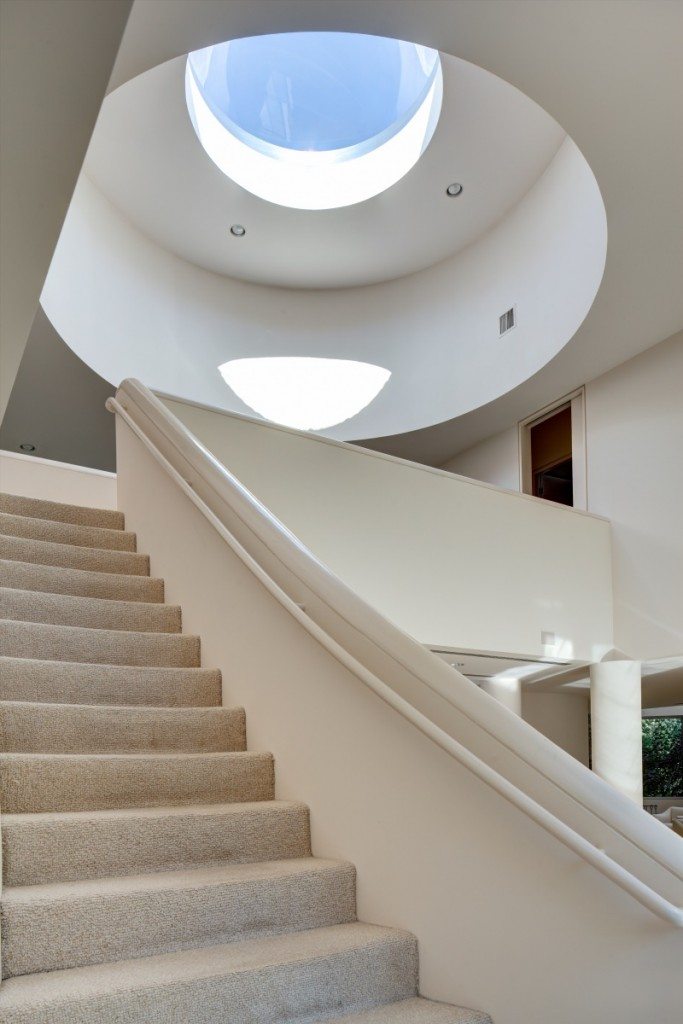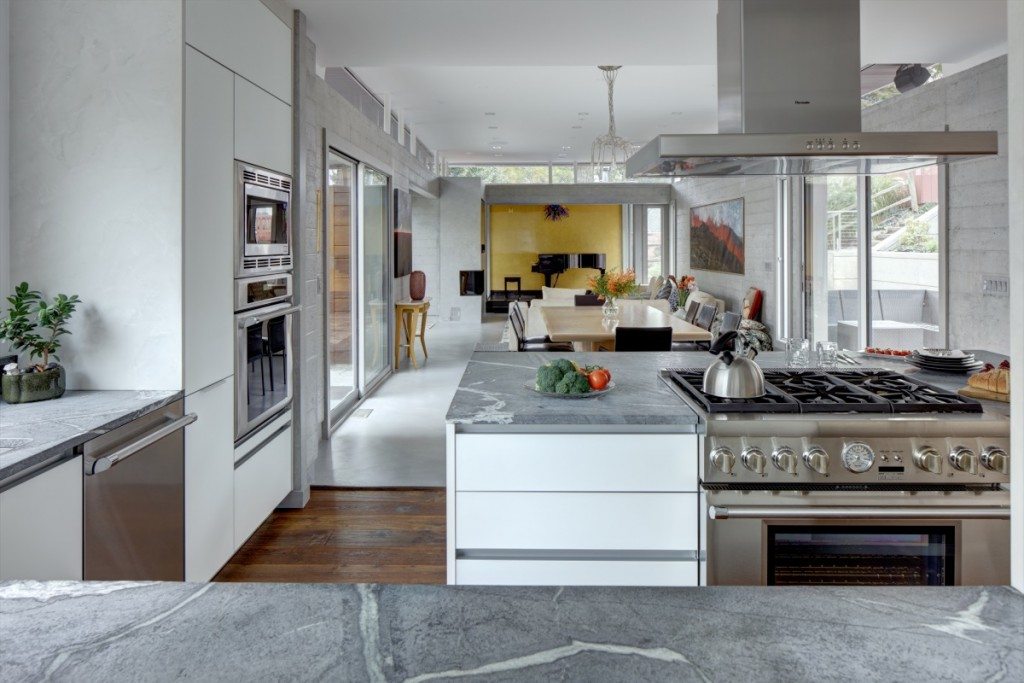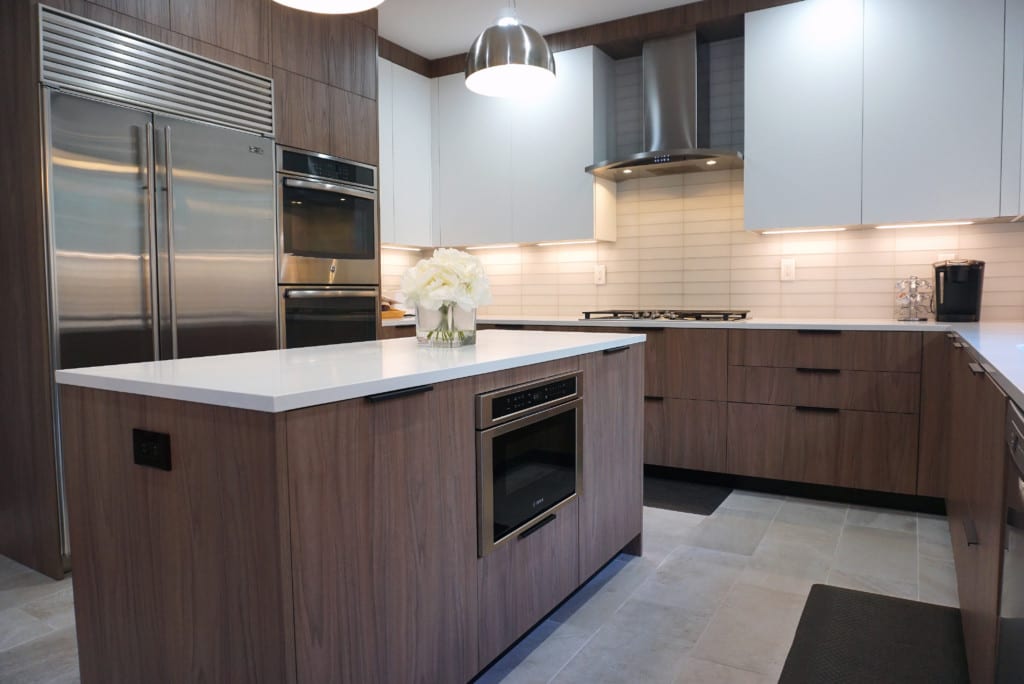Lighting has a dramatic effect on how one feels and behaves in a particular space. Never so important is functionality with lighting as it is in the kitchen. Lighting design in your high-end kitchen plays an integral role in defining how the space is used, how efficient the space is, and how one feels while moving about the kitchen. Because it is so important, the kitchen lighting design should be of foremost importance when planning a kitchen redesign.

Experts have noted that people are drawn – visually and emotionally – to light in a space. Therefore, as the kitchen often functions as an entertaining space as much as it does a space to prepare food, a lighting plan will dictate how guests interact with the space. The underlying cause of the way people behave in a well-lit space is how the lighting is layered.
When it comes to kitchen lighting, layering is of integral importance because there is no one-way to light the entire space. In a common well-designed kitchen, a light will be found underneath cabinets, over a modern or traditional kitchen island, as well as over the cooking range. There are three major types of lighting that accomplish these various functions. They are:
- Decorative
- Accent
- Task
- Ambient
Decorative lighting is what it sounds like – it adds intrigue to a space by providing illuminated decoration. An example of decorative light might be a wall fixture that dimly gives off luminescence.
Accent lighting adds dimension and depth to your American or Italian luxury kitchen by placing light in or on a particular space. For example, track lighting or recessed adjustable lighting would be considered accent lighting.

Task lighting is the light that illuminates the spaces where one works in the kitchen, such as food preparation spaces. Task lighting also might include lighting inside a pantry or cabinet that assists one in finding what they need.
Ambient lighting is a gentle light that fills the entire space by bouncing off of the ceiling. Torchieres and opaque wall sconces work toward this effect.
Each type of lighting within these layers has its own function, and therefore no one layer would create the desired effect alone. For example, if only ambient lighting is employed, the air will be bright but the people will feel as though they are in the dark. Meanwhile, a sole use of decorative lighting will draw the eye too steadfastly to the focal point of the decoration, not letting people see one another. In both of these instances, people may subconsciously register that the homeowner feels that the belongings that are being lit are more important than the guests themselves.
The present lighting market has some tricks up its sleeves to provide interesting lighting to luxury kitchens. For example, lights that take different shapes and forms are very big, such as rectangular lights. Translucent fixtures are being used more and more in place of opaque ones, and bold pendants are adding a lot of pop over islands.
To create a space that is both livable, functional, and makes guests feel comfortable and at home, layering light in a well-executed lighting plan is incredibly important
